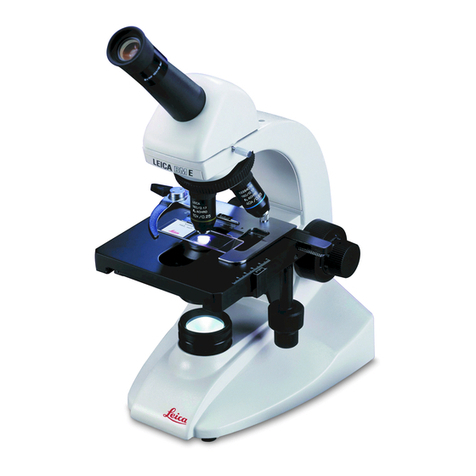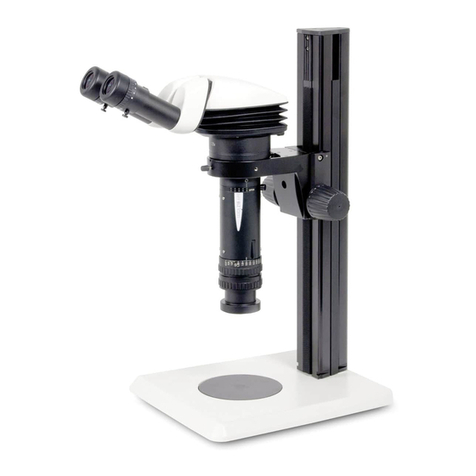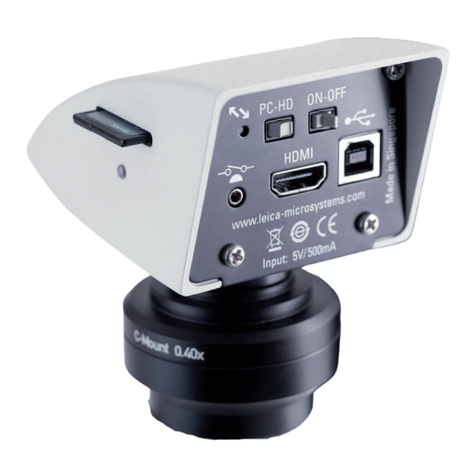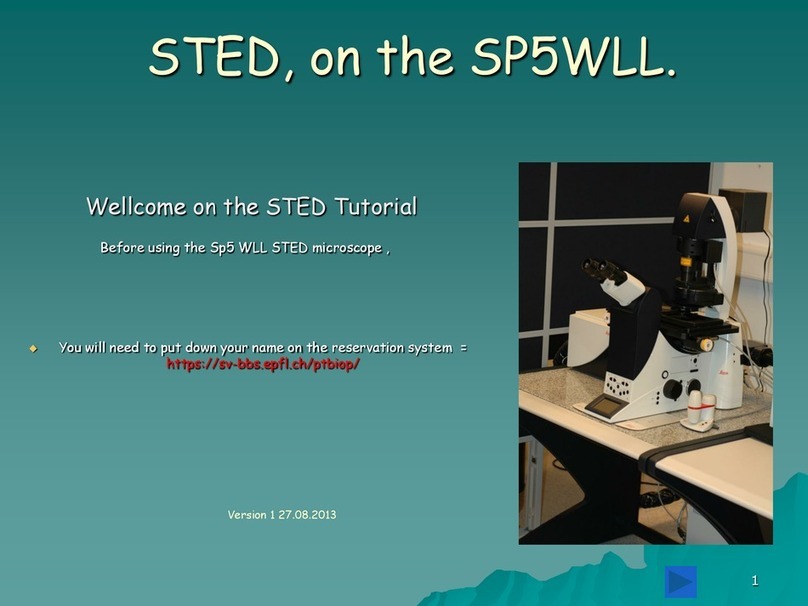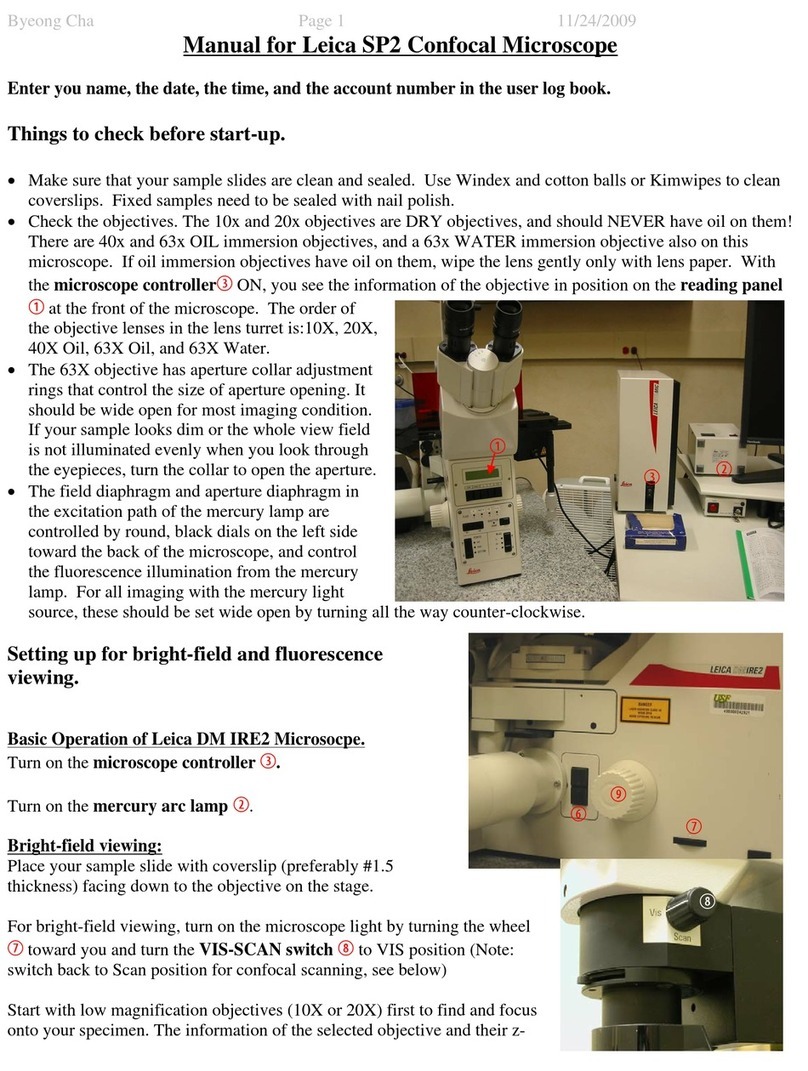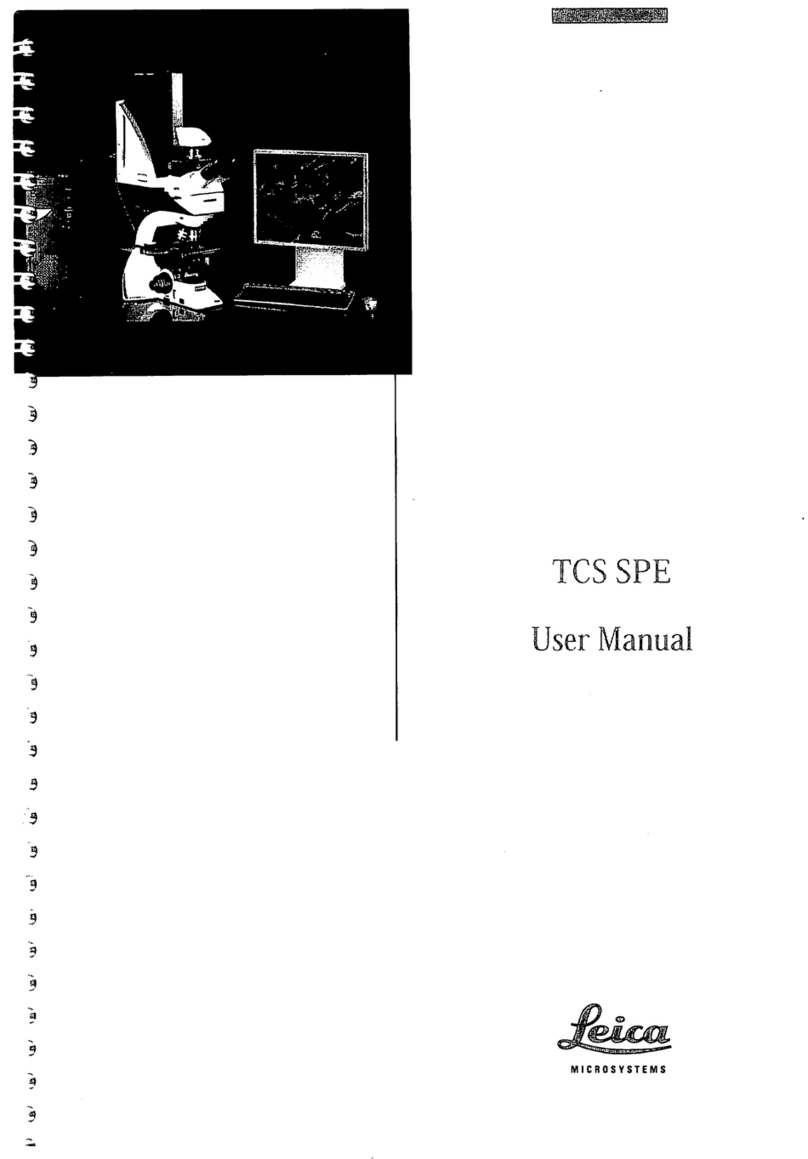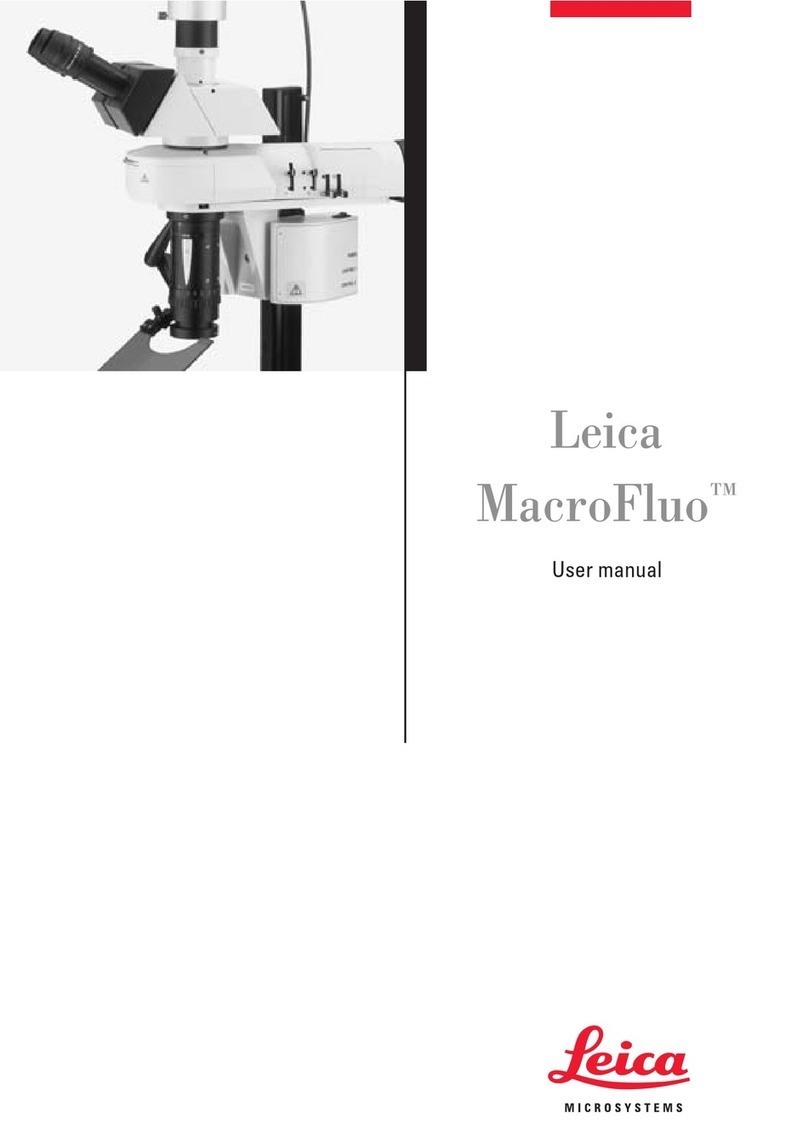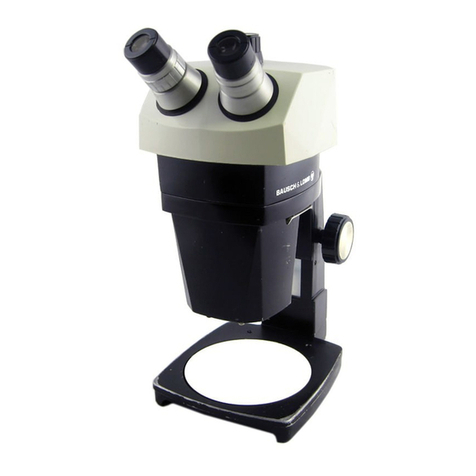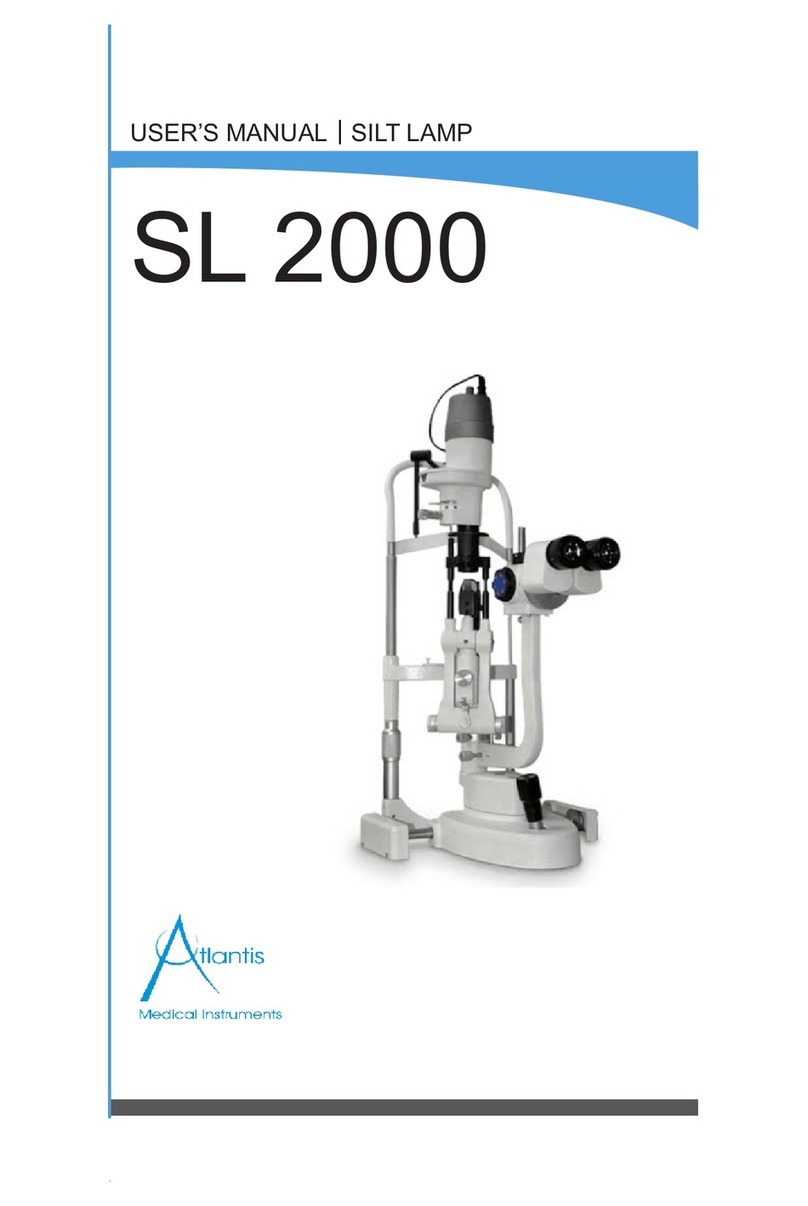Leica M Series User Manual 3
Important Safety Notes
User manual
The individual modules of the Leica M stereo
microscopy series include an interactive
CD-ROM with all relevant user manuals in
20 other languages. Keep it in a safe place,
and readily accessible to the user. User manu-
als and updates are also available for you
to download and print from our website at
www.stereomicroscopy.com.
This User Manual describes the special func-
tions of the individual modules of the Leica M
stereo microscopy series and contains impor-
tant instructions for their operational safety,
maintenance, and accessories.
The "Safety concept" booklet contains addi-
tional safety information regarding the service
work, requirements and the handling of the
stereo microscope, accessories and electrical
accessories as well as general safety instruc-
tions.
You can combine individual system articles
with articles from external suppliers (e.g. cold
light sources, etc.). Please read the user manual
and the safety requirements of the supplier.
Before installing, operating or using the instru-
ments, read the user manuals listed above.
In particular, please observe all safety instruc-
tions.
To maintain the unit in its original condition
and to ensure safe operation, the user must
follow the instructions and warnings contained
in these user manuals.
Special manuals
Special manuals are provided for a number of
accessories:
OUser Manual M2-216-1 for lamp housing
with high-pressure mercury burner.
OUser Manual for ebq 100 isolated supply
unit for 100 W high-pressure mercury
burners.
OUser Manual M2-267-1 for the motorized
focus system.
OUser Manual M2-166-2 for FluoCombi III.

